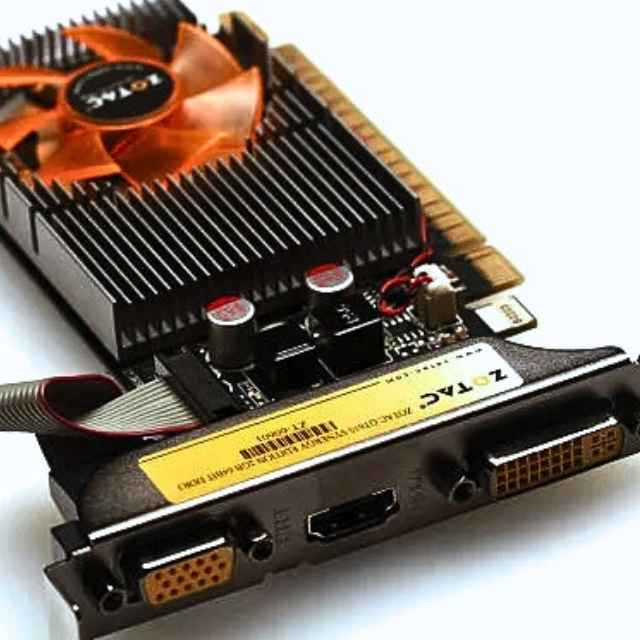NVIDIA’s next-generation GeForce RTX 50 series GPUs are set to redefine the gaming and professional graphics experience. However, behind the scenes, the company’s tight profit margins for these GPUs are creating challenges for its board partners. Manufacturers that produce and sell NVIDIA-based graphics cards under brands like ASUS, MSI, and Gigabyte are reportedly under pressure, with some executives describing the situation as unsustainable. One commented that gathering the maker’s recommended retail value (MSRP) feels like foundation.
The pricing structure is a hot topic in the GPU industry, as it influences everything from the affordability of high-performance cards to the sustainability of board partners’ operations.
What Are NVIDIA’s GeForce RTX 50 GPUs?
The GeForce RTX 50 series represents NVIDIA’s latest leap in GPU technology, powered by the new
Ada Lovelace-Next architecture. Designed for gaming, AI, and professional workloads, the RTX 50 series offers groundbreaking performance improvements, including higher clock speeds, better power efficiency, and advanced AI-driven features like DLSS 4.0.
Next-Generation Performance: Faster rendering and higher frame rates.AI-Enhanced Gaming: Enhanced capabilities with DLSS (Deep Learning Super Sampling).Ray Tracing: Improved ray tracing cores for ultra-realistic lighting and shadows.Lower Power Consumption: Optimized efficiency for lower heat output.
While these features excite consumers, the pricing strategy behind the RTX 50 series has sparked industry debate.
Tight Margins and Their Impact on Board Partners
NVIDIA’s pricing model leaves little room for board partners to profit from the sale of RTX 50 GPUs. The MSRP is typically set to make the cards competitive in the market, but the costs of manufacturing, shipping, and marketing can often exceed the margins allowed by the MSRP.
Challenges for Board Partners:
High Manufacturing Costs:
Advanced cooling systems, better PCBs (printed circuit boards), and robust designs are needed for high-performance GPUs, driving up production costs.
Reduced Profits:
The tighter margins mean board partners are earning less per unit, even as they invest more in R&D and production.
Pressure to Innovate:
To stand out in a competitive market, companies must offer unique designs, better cooling, and additional features—all of which add to costs.
Market Competition:
Brands compete fiercely to offer GPUs at or below MSRP, further cutting into profits.
An unnamed executive from a leading board partner recently stated, “When we sell at MSRP, it feels like we’re doing charity work. The margins are razor-thin, and the market is unforgiving.”
NVIDIA’s Role and Business Model
NVIDIA’s approach prioritizes market dominance by offering cutting-edge GPUs at competitive prices. While this benefits consumers, it shifts much of the financial burden onto board partners. NVIDIA primarily profits from selling the GPU chips themselves, leaving the additional costs of assembly and distribution to its partners.
Why NVIDIA Maintains Tight Margins:
Market Competitiveness:
Competitive pricing ensures NVIDIA retains its dominance over competitors like AMD and Intel in the GPU market.
Focus on Brand Value:
NVIDIA’s reputation for high-performance GPUs drives demand, encouraging board partners to align with their vision despite low margins.
Encouraging Volume Sales:
Tight margins push board partners to sell more units to maintain profitability, benefiting NVIDIA through increased chip sales.
Consumer Pricing and Availability
The tight margins have implications for consumers as well. While MSRP cards are often touted as affordable, limited supply can lead to price hikes in the retail market. Additionally, premium models with enhanced features often come at a steep markup, making high-end GPUs inaccessible for many gamers and creators.
Consumer Trends:
Demand for Affordability:
Gamers and professionals alike are looking for high-performance GPUs without breaking the bank.
Frustration Over Scalping:
Limited stock often leads to scalping, where third-party sellers charge exorbitant prices for GPUs.
Preference for Premium Models:
Many consumers are willing to pay extra for premium features like better cooling, RGB lighting, and factory overclocking, despite higher costs.
Long-Term Implications for the GPU Industry
The current pricing model could have lasting effects on the GPU market, particularly for board partners. If the financial pressure continues, smaller brands might struggle to survive, leading to reduced competition and innovation.
Possible Outcomes:
Consolidation of Board Partners:
Smaller manufacturers may exit the market, leaving only major players like ASUS, MSI, and Gigabyte.
Reduced Innovation:
Financial constraints could limit the ability of board partners to innovate, leading to less differentiation in the GPU market.
Shifts in Consumer Pricing:
To maintain profitability, board partners may focus on high-end premium GPUs, making entry-level options less appealing or more expensive.
Strained Relationships:
Tensions between NVIDIA and its partners could grow, leading to calls for a more equitable pricing structure.
NVIDIA’s Perspective
From NVIDIA’s viewpoint, the pricing strategy is necessary to maintain market dominance while offering cutting-edge technology to consumers. The company has also emphasized its commitment to delivering value through innovations like AI-enhanced gaming and improved power efficiency.
While NVIDIA’s leadership has acknowledged the challenges faced by board partners, they argue that the long-term benefits of aligning with the GeForce RTX brand outweigh the immediate financial strain.
What Can Be Done?
Addressing the issue of tight margins requires collaboration between NVIDIA GeForce RTX 50 and its board partners. Possible solutions include:
Flexible Pricing Models:
Allowing board partners to set slightly higher prices for premium models could help balance costs.
Incentives for Innovation:
NVIDIA could offer subsidies or incentives to partners investing in R&D for innovative designs.
Improved Supply Chain Efficiency:
Streamlining manufacturing and distribution processes could help reduce costs.
Transparency in Pricing:
Open communication between NVIDIA GeForce RTX 50 and its partners about production costs and market trends could lead to more equitable pricing strategies.
Conclusion
NVIDIA’s tight GeForce RTX 50 margins have put significant pressure on board partners, highlighting the challenges of balancing market competitiveness with profitability. While consumers benefit from cutting-edge technology at affordable prices, the financial strain on manufacturers raises concerns about the long-term sustainability of the GPU industry.











